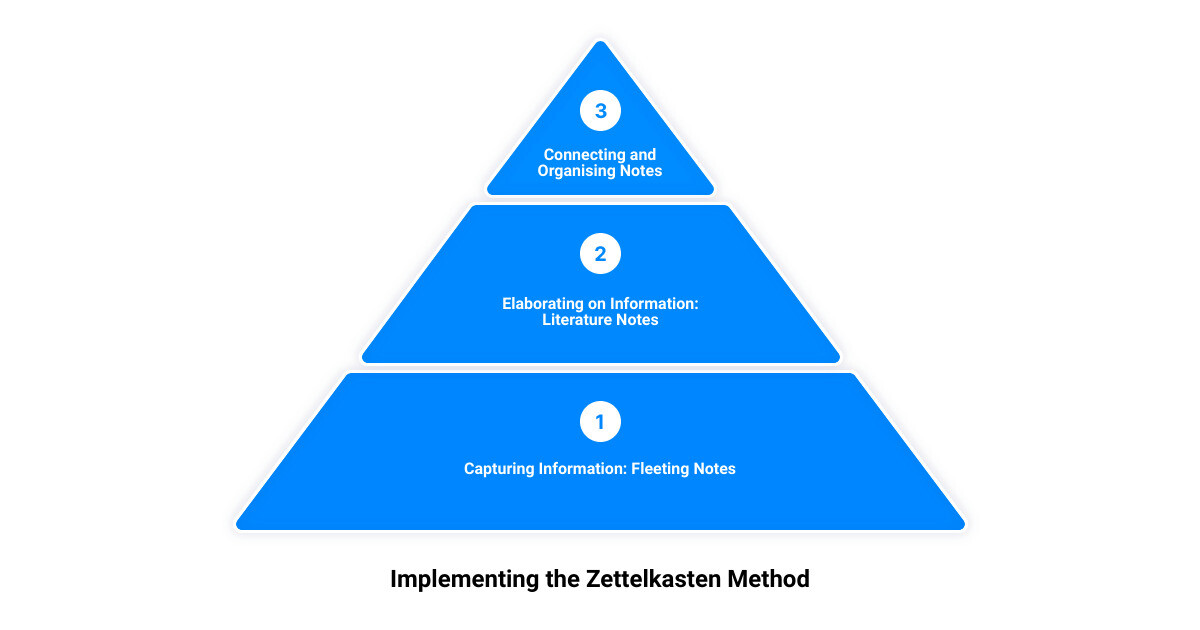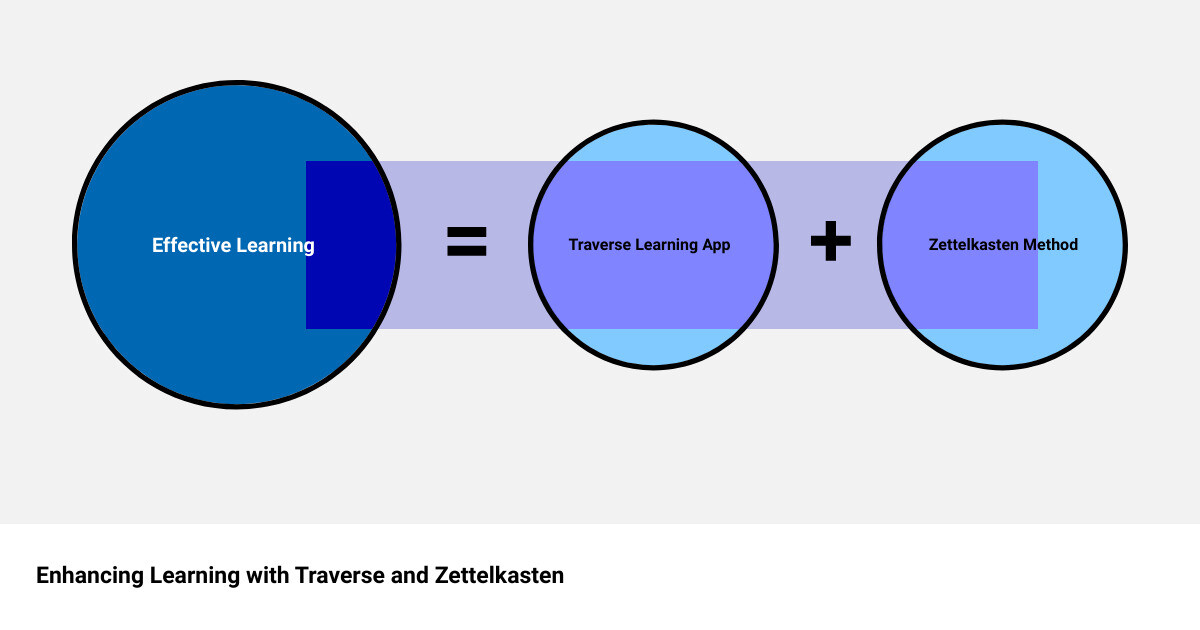Introduction to the Zettelkasten Method
In the world of lifelong learning, the ability to effectively capture, organize and recall information is invaluable. For those tackling complex subjects like Mandarin Chinese, the challenge is even more significant. Thankfully, there's a revolutionary technique that's transforming the way we manage knowledge: the Zettelkasten method. This ingenious note-taking system, championed by German sociologist Niklas Luhmann, not only helps you organize your knowledge but also sparks connections between ideas, thereby improving your memory and knowledge retention. So, if you're eager to supercharge your learning and want to master the art of effective note-taking, it's time to dive into the fascinating world of the Zettelkasten method.
The Origins and Principles of the Zettelkasten Method
The Genius Minds Behind the Zettelkasten Method
Before we delve into the principles of the Zettelkasten method, let's pay homage to the genius minds that brought it to life. The Zettelkasten method was developed by Niklas Luhmann, a German sociologist, and a prolific writer. He credited his extensive productivity and deep understanding of complex subjects to his unique note-taking system, the Zettelkasten. Translated as 'slip-box' or 'note-box,' this method is far from your regular note-taking technique. It's a powerful tool that enables you to create an interconnected web of knowledge, enhancing your learning and retention capacity.
The Principle of Atomicity in the Zettelkasten Method
One of the mainstays of the Zettelkasten method is the Principle of Atomicity. This principle emphasizes the importance of keeping each note or 'Zettel' focused on a single idea. The goal is to distill your notes into standalone insights that are clear, concise, and self-contained. For instance, when learning Mandarin Chinese, you would create an atomic note for each Chinese character you learn, detailing its meaning, pronunciation, and any relevant associations. This approach allows for easy linking and cross-referencing, keeping your Zettelkasten organized and efficient.
The Principle of Connectivity in the Zettelkasten Method
Another crucial principle of the Zettelkasten method is the Principle of Connectivity. This principle centers on creating meaningful connections between your atomic notes. Unlike traditional note-taking systems which rely heavily on hierarchical categorization, the Zettelkasten method values the creation of a web of knowledge through interlinked notes. Such an approach enables you to see patterns and relationships that might not be immediately apparent, leading to deeper comprehension and more effective retention of information. This can be particularly beneficial when learning Mandarin Chinese, as linking related characters can reveal commonalities in meaning or pronunciation, thereby enhancing your understanding of the language.
The Zettelkasten Method vs. The Second Brain: A Comparative Analysis
As our lifelong learner embarks on their learning journey, they may encounter different methodologies designed to boost their productivity and knowledge retention. Two such methods that often come into the spotlight are the Zettelkasten method and the concept of a "second brain". But how do these two compare? Let's take a closer look.
Understanding the Second Brain Concept
The notion of a "second brain" has been popularized by the Building a Second Brain (BASB) methodology. This system treats your note-taking software or digital notebook as a secondary brain - a place to store, organize, and revisit information. Similar to the Zettelkasten method, the second brain is designed to help you manage the information overload of the digital age, but it primarily serves as a resource or a reference you can lean on when needed.
Key Differences Between the Zettelkasten Method and the Second Brain
While both the Zettelkasten method and the second brain aim to optimize your learning and knowledge management, they are fundamentally different in their approach.
A key difference lies in how they handle resources. The second brain sees resources as the endpoint - it is where information is stored and retrieved. On the other hand, the Zettelkasten method views resources as a starting point. The real work begins after we extract ideas from these resources, place them on individual atomic notes, and then leave the resource behind. In essence, with the Zettelkasten method, you're not just storing information, you're actively engaging with it and transforming it into knowledge.
Another crucial distinction is the Zettelkasten's emphasis on connectivity. In the Zettelkasten system, each note is linked to others, forming a web of interconnected ideas that mirrors the complexities of our own thought processes. This approach not only helps in fostering deeper understanding but also sparks creative insights. The second brain, while effective for storing and retrieving information, doesn't inherently encourage this level of interconnection between ideas.
In conclusion, while both systems can boost your productivity and enhance your learning efficiency, the Zettelkasten method takes a more active and interconnected approach to knowledge management. Depending on your learning objectives and personal preferences, you might find one system more appealing than the other. However, for our lifelong learner seeking to master Mandarin Chinese, the Zettelkasten's focus on atomicity and connectivity might prove to be a game-changer.

Implementing the Zettelkasten Method: A Step-by-Step Guide
Embarking on the journey towards mastering Mandarin or any other field of knowledge requires an effective knowledge management system. The Zettelkasten method, with its focus on atomicity and connectivity, provides a systematic approach that can revolutionize the way you capture, organize, and connect information. Let's dive into the step-by-step process of implementing the Zettelkasten method.
Capturing Information: The Role of Fleeting Notes
The first step in the Zettelkasten method is to capture information through fleeting notes. Consider these notes as the butterflies of your knowledge garden—ephemeral and transient. They can be quick scribbles or thoughts you capture throughout the day while reading or thinking about Mandarin characters, phrases, or grammar rules.
The essential goal of fleeting notes is to record ideas quickly without disrupting your momentum. At the end of the day, sift through these notes, distilling the important ones into more permanent notes, while discarding or archiving the rest.
Elaborating on Information: The Importance of Literature Notes
Next, we delve deeper into the information using literature notes. These notes are created while you're engrossed in a specific resource, such as a Mandarin textbook, article, or tutorial. These notes take the form of detailed summaries and comments on the resource, always rewritten in your own words to ensure comprehension and retention.
Literature notes serve a crucial role in your referencing system, acting as the bridge between your fleeting thoughts and the permanent notes that form the backbone of your Zettelkasten.
Connecting Notes: The Power of Permanent Notes
Permanent notes are the heroes of the Zettelkasten method. These are the notes that are refined, distilled, and added to your Zettelkasten for long-term reference. They represent the polished ideas that you want to explore further.
Every time you add a new permanent note, take a moment to look through your existing notes. Ask yourself how this new piece of information adds to, supports, or contradicts your existing knowledge about Mandarin. This thoughtful process encourages the development of a web of interconnected knowledge, mirroring the natural workings of our brain and enhancing learning and recall.
Organizing Your Zettelkasten: Using Tags and Zettel Identifiers
Finally, to maintain control over your growing web of knowledge, it's crucial to add structure to your Zettelkasten. Assigning a unique identifier (like a number or a date) to each Zettel allows for easy reference.
In the Zettelkasten method, categories are eschewed in favor of tags. Tags offer flexibility and can evolve with your understanding of the subject. For instance, a tag like #MandarinGrammar or #ChineseCulture can help you quickly locate related notes, leading to a more efficient review process and stimulating connections between ideas.
Implementing the Zettelkasten method might seem daunting at first, but remember, the goal is to optimize your workflow of learning and knowledge production. By faithfully following these steps, you'll soon find yourself navigating through your personal knowledge repository with ease and efficiency.

The Zettelkasten Method and the Traverse Learning App
How Traverse Enhances the Zettelkasten Method
Traverse, a versatile learning app, takes the power of the Zettelkasten method and supercharges it for digital learners. It encapsulates the essence of Zettelkasten, enabling learners to organize their notes systematically, find information with ease, and cultivate their unique ideas. The app's features actively support the principles of atomicity and connectivity that form the backbone of the Zettelkasten method.
The app facilitates the creation of atomic notes, encouraging users to break down complex information into manageable, bite-sized chunks. These notes can be linked together, enabling learners to weave a dynamic web of interconnected ideas, just as Zettelkasten intended. Furthermore, Traverse's spaced repetition feature ensures efficient review and reinforcement of knowledge.
Importing Anki Decks into Traverse for Effective Learning
Understanding the challenges of transitioning from one learning system to another, Traverse offers users the ability to import Anki decks seamlessly. This feature is particularly beneficial for learners who have invested significant time in creating and using Anki flashcards for their studies. The ability to integrate these existing resources into the Traverse app allows learners to leverage the combined strengths of Anki's flashcard system and the Zettelkasten method. This seamless integration results in a more efficient, comprehensive, and personalized learning experience.
Learning Mandarin Chinese with Traverse and the Zettelkasten Method
For those on the journey of learning Mandarin Chinese, combining the Zettelkasten method with Traverse can prove to be a game-changer. The Zettelkasten method's emphasis on atomicity aligns perfectly with the process of learning Mandarin characters, each being a standalone unit of meaning.
By using Traverse, learners can create atomic notes for each character, detailing its meaning, pronunciation, and use. These notes can then be linked to related characters or words, creating a network of interconnected knowledge. This method not only aids in memory recall but also helps in understanding the context and usage of each character.
Furthermore, the integration of Anki decks into Traverse allows learners to continue practicing character recognition and pronunciation using their existing flashcards. By systematically organizing their learning materials and actively engaging with them, Chinese language learners will find themselves progressing towards fluency with newfound confidence and efficiency.
In conclusion, the combination of the Zettelkasten method and the Traverse app creates a potent learning tool. It empowers learners to take control of their learning processes, master complex topics, and cultivate a lifelong love for learning.
The Impact of the Zettelkasten Method on Learning and Knowledge Management
Imagine having a superpower that allows you to easily retain and recall information. That's exactly what the Zettelkasten method provides. This ingenious note-taking system transforms the way you learn and manage knowledge, turning it into a dynamic and interconnected web of ideas.
How the Zettelkasten Method Transforms Note-Taking and Learning
With traditional note-taking, information tends to be static and compartmentalized. The Zettelkasten method, on the other hand, encourages dynamic interaction between ideas. By establishing connections between different pieces of knowledge, you create a mental map that mirrors your thought process. This way, your notes become a reflection of your thinking, allowing you to follow the breadcrumbs of your ideas and insights.
The Zettelkasten method employs a systematic approach to note-taking. You start with literature notes, which capture the essence of what you read. These notes are then distilled into permanent notes - the core of your knowledge system. By connecting these notes, you create a network of ideas, leading to an emergent understanding of the topic at hand.
This approach not only enhances information recall but also boosts creativity. By identifying patterns and establishing relationships between seemingly unrelated concepts, you're able to generate new insights and ideas. This is particularly useful for lifelong learners, researchers, and writers who need to constantly generate fresh perspectives.
The Benefits of the Zettelkasten Method for Students and Lifelong Learners
Mastering the Zettelkasten method offers numerous benefits for both students and lifelong learners. For starters, it combats the common problem of forgetting where you stored a certain piece of information. With the Zettelkasten method, information is systematically organized and easily retrievable, saving you the frustration of rummaging through stacks of notes.
Moreover, the Zettelkasten method is a great tool for knowledge retention. By forcing you to actively engage with and process information, it ensures that knowledge sticks. Research conducted by the University of California found that using a digital note-taking system like the Zettelkasten could lead to a 30% increase in productivity and time savings.
Perhaps the greatest advantage of the Zettelkasten method is its adaptability. It can be tailored to any subject or discipline, making it a versatile tool for learning. Whether you're studying Mandarin Chinese characters or delving into the intricacies of quantum physics, the Zettelkasten method provides a structured yet flexible framework for knowledge acquisition and management.
Embracing the Zettelkasten method means embarking on a journey of continuous learning and discovery. It's not just about taking notes - it's about weaving a rich tapestry of knowledge that grows and evolves with you.
Conclusion: Mastering the Art of Note-Taking with the Zettelkasten Method
The art of effective note-taking has been significantly transformed by the Zettelkasten method. This extraordinary system, rooted in the principles of atomicity and connectivity, has redefined how we capture, elaborate, and connect information. It's not just a note-taking process—it's a powerful knowledge management tool, a cognitive enhancement technique that taps into our innate ability to see patterns and form connections.
By migrating ideas from fleeting notes to literature notes and ultimately to permanent notes, the Zettelkasten method ensures that each piece of knowledge finds its rightful place in your personal knowledge network. Through the use of tags and Zettel identifiers, this method facilitates easy navigation within your reservoir of knowledge, making information retrieval a breeze even years down the line.
Moreover, the integration of the Zettelkasten method with the Traverse learning app has further amplified the potential of this note-taking method. Traverse's unique features enhance the Zettelkasten system, allowing you to import Anki decks for efficient learning and making it an ideal tool for mastering a complex language like Mandarin Chinese.
The impact of the Zettelkasten method on learning and knowledge management cannot be overstated. It has revolutionized the way students and lifelong learners engage with information, fostering an environment conducive to creativity, critical thinking, and effective learning. It takes note-taking from being a mundane task to a dynamic process of knowledge building and intellectual growth.
In conclusion, to master the art of note-taking, adopting the Zettelkasten method is a step in the right direction. It's a powerful tool that not only enhances your ability to retain and recall information but also boosts your capacity to generate new insights and ideas. Through the Zettelkasten method, you're not just taking notes—you're creating a personal knowledge base that evolves and grows with your intellectual journey.

